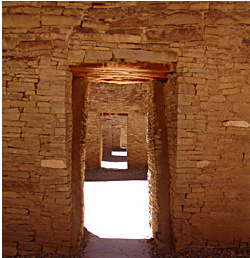Publication Date
Fall 12-13-2019
Abstract
Archaeological remote sensing includes a suite of non-invasive methods that can be used to study elements of the archaeological record that may not be achievable otherwise. Using primarily geophysical remote sensing, and especially ground-penetrating radar (GPR), three studies involving questions of “use” were conducted in Chaco Canyon, New Mexico. The first used GPR to study the built interior features of a single room in Pueblo Bonito to evaluate use and function of that room. Three categories of features were identified in the GPR data and confirmed with subsequent excavation. The second study used GPR to re-evaluate an enigmatic land use feature located near one of the canyon’s great houses. A complex series of features were identified below the surface pattern characteristic of this feature, suggesting it represents a series of building episodes. Finally, an expanded remote sensing approach, including GPR, magnetometry, and aerial photography, was used at a multi-site scale to evaluate land use patterns from the perspective that they served as part of an agricultural system. Results show that while land use patterns are prevalent, they do not conform to the patterns predicted in previous models.
Keywords
Archaeological remote sensing, Chaco Canyon, agricultural fields, ground-penetrating radar, geophysics, land use
Document Type
Dissertation
Language
English
Degree Name
Anthropology
Level of Degree
Doctoral
Department Name
Anthropology
First Committee Member (Chair)
Wirt H. Wills
Second Committee Member
Frances Hayashida
Third Committee Member
Bruce Huckell
Fourth Committee Member
Christopher Lippitt
Recommended Citation
Sturm, Jennie O.. "Using Archaeological Remote Sensing to Evaluate Land Use and Constructed Space in Chaco Canyon." (2019). https://digitalrepository.unm.edu/anth_etds/183



